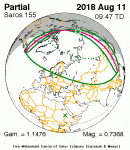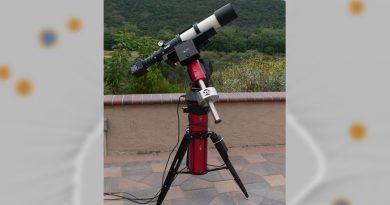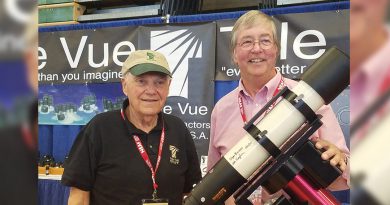2018: Solar and Lunar Phenomena Overview
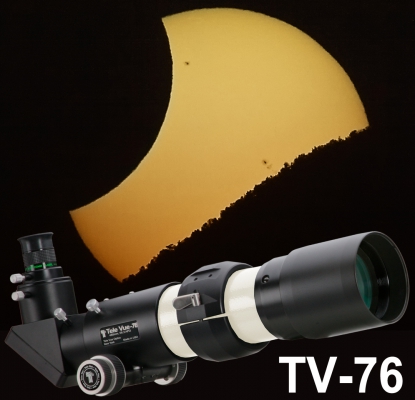
Solar Eclipses
First, some bad-news for all those newly confirmed “eclipse chasers” from the Great American Eclipse in 2017: there will be no total solar or annular eclipses this year — just some partials.
First, some bad-news for all those newly confirmed “eclipse chasers” from the Great American Eclipse in 2017: there will be no total solar or annular eclipses this year — just some partials.
Southern hemisphere observers will get a double-dose of partial eclipses starting February 15th. That event will cover an area from the southern part of South America to a large chunk of Antarctica. This will be followed by another partial event July 13th — mostly observable in the waters between Antarctica and Australia — with the shadow making landfall in the southern parts of Victoria and South Australia.
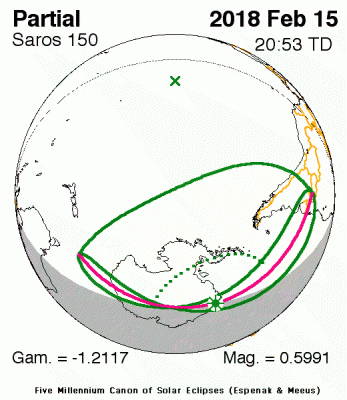 |
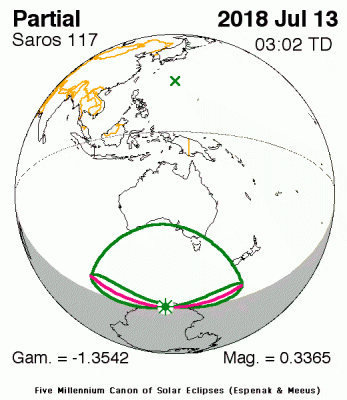 |
| 2018 Solar Eclipse maps and data courtesy of Fred Espenak and Jean Meeus, “Five Millennium Catalog of Solar Eclipses: -1999 to +3000” (NASA/TP-2008-214170). Green lines denote limits of visibility. Key to Solar Eclipse Figures. | |
The northern hemisphere will get its partial eclipse on August 11th. Event visibility will be from extreme northern Canada, over the pole, northern Europe, and down across Asia just missing India and Japan (diagram below).
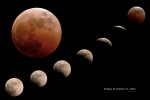
Lunar Eclipses
Two total lunar eclipses will be visible this year. The first will be at the end of the month on January 31st. The phase of the eclipse showing the Earth’s Umbra (darkest shadow) will be visible from the mid-west to western parts of the US (the Moon sets on the East Coast as things get interesting). The story is similar for Canada and Mexico: the western regions will be getting more of a show. In the eastern hemisphere the event will be visible throughout the Pacific to eastern China.
Two total lunar eclipses will be visible this year. The first will be at the end of the month on January 31st. The phase of the eclipse showing the Earth’s Umbra (darkest shadow) will be visible from the mid-west to western parts of the US (the Moon sets on the East Coast as things get interesting). The story is similar for Canada and Mexico: the western regions will be getting more of a show. In the eastern hemisphere the event will be visible throughout the Pacific to eastern China.
The second lunar eclipse of this year happens on July 27th. North America will be almost completely left out of the show for this one. Most of the rest of the planet, save for Siberia and the northern pole, will see all or at least the central, umbral, part of the eclipse.
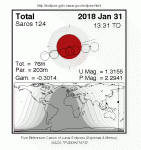 |
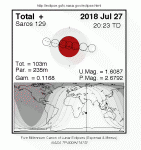 |
| 2018 Lunar Eclipse maps and data courtesy of Fred Espenak and Jean Meeus, “Five Millennium Catalog of Lunar Eclipses: -1999 to +3000” (NASA/TP-2009-214173). Dark areas see nothing, and shaded areas will see part of the event. See Key to Lunar Eclipse Figures. | |
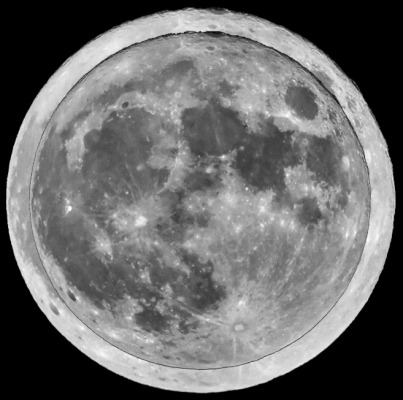
Supermoons, Micromoons, & Blue Moons
The aforementioned January 31st lunar eclipse is extra special because mid-eclipse (full moon) occurs about 30-hours after the moon’s closest approach to earth (Perigee). Hence this eclipse will happen during a supermoon. It will also be the second full-moon of the month — colloquially referred to as a blue moon. But wait, there’s more: they’ll be second blue moon on March 31st. A double blue moon in the same year won’t happen again until 2037!
The aforementioned January 31st lunar eclipse is extra special because mid-eclipse (full moon) occurs about 30-hours after the moon’s closest approach to earth (Perigee). Hence this eclipse will happen during a supermoon. It will also be the second full-moon of the month — colloquially referred to as a blue moon. But wait, there’s more: they’ll be second blue moon on March 31st. A double blue moon in the same year won’t happen again until 2037!
Conversely, on July 27th, the full moon will be a micromoon: smaller than unusual due to reaching its furthest distance from earth (apogee) less than 15-hours before becoming full. Imaging the supermoons and micromoons with the same equipment and exposure and then compositing them together is a neat little science project you can try. See our Night of the Micromoon blog post for more background. If you miss this opportunity, there won’t be a second micromoon this year to image.
More Info
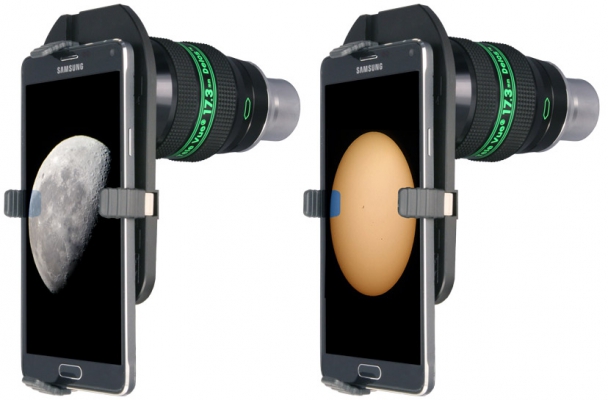

- You’ll be able to touch and feel all our eyepieces, Powermates, scopes, mounts, and accessories at the yearly spring NEAF show in NY.

